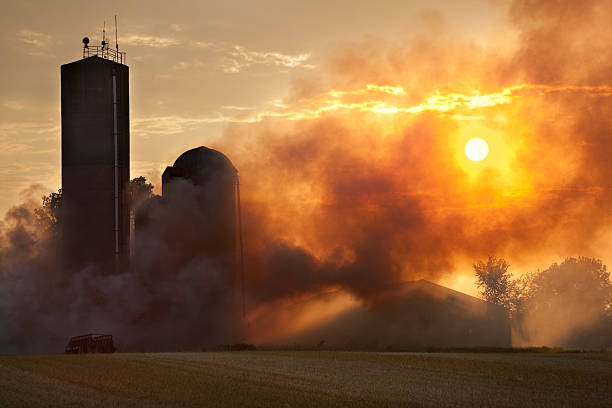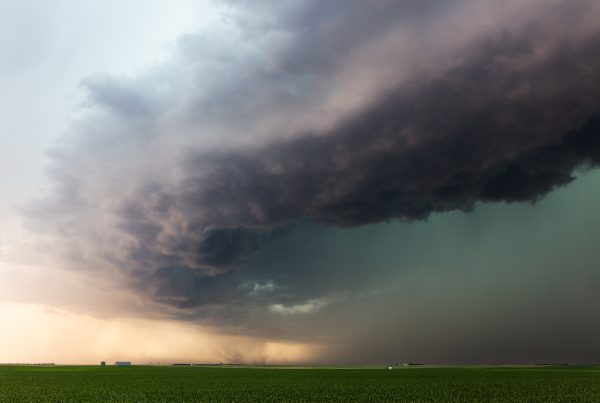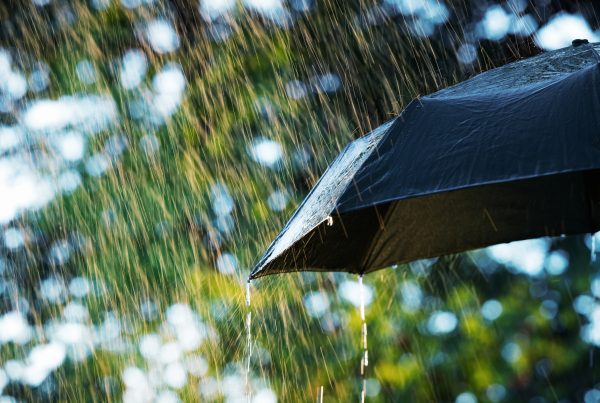Grain and livestock producers face numerous challenges, from uncertain grain markets to rising production costs and natural disasters. While many of these issues are beyond our control, one significant risk can be mitigated: fires on the farm. As a firefighter and insurance producer, I’ve seen firsthand the impact of farm fires and the importance of preventative measures. Here’s a detailed guide to help you protect your farm and livelihood from fire risks.
Equipment and Maintenance:
As this growing season progresses, we will notice the annual shift as crops dry down. Harvest equipment will be removed from its storage and owners will engage in routine maintenance to avoid breakdowns. Several things can happen to cause an in-field breakdown, but the worst can be the loss of a combine. As a firefighter in our rural town, we respond to a fair number of field and machinery fires during harvest. The origin of field fires is typically two things, human-made fire (trash and natural fuels: sticks, leaves, and grasses) and machinery fire. The common denominator is us, humans.
Key maintenance steps:
- Daily Equipment Checks: Perform daily greasing and cleaning of chaff collecting areas. Use a leaf blower to clean machinery before and after use.
- The 15-Minute Rule: This was a technique my friend introduced me to. After shutting your machine down for the day, take 15 minutes to evaluate your machine, allowing it to cool down. Utilize this time to clean it off, look for signs of wear and tear, and be certain your machine isn’t going to catch fire after “calling it a day”.
- Fire Extinguishers: Annually check and maintain fire extinguishers. Remove from the bracket hanger/cradle and hold it upside down. With a rubber mallet, gently tap around the base of the extinguisher to break up the dry chemical compound that settles over time.
Incorporating these steps into your daily routine can be a game-changer. As if there isn’t already enough to do during a full day of harvest. It may take a reminder on your phone to alert you as the day starts, or even a physical list within the cab to check things off to ensure these steps aren’t overlooked.
Situational Awareness and Planning
Other fire prevention measures include having situational awareness and paying attention to the weather forecast. Situational awareness is important while operating large equipment and can resolve situations such as; Unfolding a combine auger into a power line, running a head cart vehicle in a dry ditch of tall grass, realizing your neighbor is burning trash on a windy day or the relative humidity is low.
Having a quick conversation with your full-time or seasonal employees will help prevent these mishaps.
If a fire occurs:
Most importantly, have a game plan if a fire does happen. What are your Standard Operating Procedures (SOPs) on your farm? The fundamentals of fire are caused by the fire triangle: fuel, oxygen, and heat. Remove one of these sources from the situation, and your fire will be extinguished.
- If your combine catches fire, your primary focus is YOU. Do not jeopardize your own life to save the combine.
- If safe, move the combine to a harvested area to prevent further spread.
- Call 911 immediately and then use your fire extinguisher, do not wait to call 911 as every second counts. When discharging a fire extinguisher, be sure to point at the base of the fire, not the flame itself.
If you are carrying a leaf blower, be careful not to intensify the fire by trying to “blow it out”. You would introduce more oxygen, causing the fire to get stronger and possibly spread. If there are patches of standing crops that are on fire or smoldering, you can utilize a leaf blower by pushing the fired crop toward the harvested part of the field to prevent the unharvested crop from catching fire.
These types of considerations bring insurance to the forefront. Have you updated your equipment list lately? Do you have foreign object coverage? Cab glass coverage? Or the more frequently used, loss of use/extra expense coverages? Equip yourself now before you are actively in harvest season to avoid possible field and machinery fires.
On-Site Grain Storage and Maintenance
After a crop is taken out of the field, you may have on-site grain storage to consider. Grain conditions may be the leading cause of excessive dust causing dust explosions. The other leading cause of bin site fires is caused by the grain dryer on-site. Monitoring your grain condition and checking drying systems for faults in wiring, or fuel supply will eliminate issues at your bin site.
Grain storage fire prevention tips:
- Conduct annual inspections of your drying system. Just like your home furnace, conducting an annual inspection with your bin supplier will help mitigate the risk of fire.
- Inspect fuel delivery and electrical feeds regularly.
- Look for signs of gas leaks, such as discolored grass, dead vegetation, or the smell of mercaptan (a chemical added to LP to be detected by smell).
Livestock Safety in Winter
For livestock producers, the shift in crop cycles signals the approach of winter. Keeping livestock warm and ensuring a water source is available are critical to a livestock operation. Avoiding chilled livestock and frozen waterers requires heat, but not always an ignition source. The common barn fire typically has one culprit: heat lamps.
Heat lamps can be an excellent source of heat for your young, or cold-intolerant livestock. The main issues with heat lamps are proximity to ignition sources, inadequate bulb receptacles, and exposed wiring. Placing your heat lamp where it can be tampered with by animals is inviting disaster into your barn.
Safe use of heat lamps:
- Secure lamps with a clamp-style base, wire, or hanging bracket to provide distance from the fence or ceiling.
- Place them in a position where they cannot be tampered with. My rule of thumb in my barn is 1 foot in proximity to anything near a heat lamp, and at least two feet away from any type of grass/straw bedding.
- Use heat lamps sparingly and consider thick bedding for warmth.
Keeping your livestock warm doesn’t always include a heating source. Getting them out of the wind and providing adequate shelter can help your animals capture more body heat, allowing them to stay warm on those brisk winter nights.
Additional fire risk comes with heating water sources. Some of these heating elements are fuel-ignited or electricity-powered, both bringing fire potential into the barn. If using fuel-based heaters, be mindful of open flames and winds that can extinguish the flame, leading to explosive fuel vapor build-up. For electrical heaters, check for exposed wires that could ignite.
With insurance in mind, is your livestock schedule where it needs to be? Maybe the limit needs increased? Is your new barn on your building schedule?
Insurance Considerations
Review your insurance policies regularly to ensure adequate coverage. Following up with your trusted advisor annually can avoid issues at claims time on your farm. Having an insurance advisor who understands your farming operation will help facilitate your discussion and ensure your coverage is adequate.
With a few proactive steps, you can significantly mitigate the risk of fire on your farm. Maintain your equipment, stay aware of your surroundings, and have a solid fire plan in place. Check your insurance policies and ensure they meet your current needs. By taking these precautions, you’re not only protecting your assets but also ensuring a safe and profitable harvest season.
Wishing everyone a safe and profitable harvest this year!









